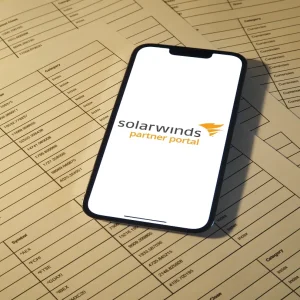
It’s human nature to be wary of that which we don’t understand or can’t control.
In the business world, social media has been thought of as one of those key areas – thought of by many as a plaything of twenty-somethings where the language isn’t even language, and symbols, images, and frantically moving pictures called ‘GIFs’ (or is it pronounced ‘JIFs’?) seem to carry the most meaning.

This could be why so many find it easy to spurn social media when it all goes wrong. And there are many instances, such as inappropriate images being posted and personal or controversial opinions being shared. But for all the apparent chaos, there are rules of engagement, processes and methods of management that can put fear to bed.
Stories about compromised social media accounts prompt strong reactions and as the hacking of Mark Zuckerberg’s social profiles showed, it seems nobody is immune in this regard. However, note that when it comes to cybersecurity the vast majority of breaches are the cause of human error. IBM’s Cyber Security Intelligence Index 2016 noted a sharp rise in ‘unauthorised access’ and ‘insiders’ (that is, employees) causing most of the recorded security incidents.
For social media channels, there’s also the risk of simple and inadvertent human error or bad judgement. Examples here include a KitchenAid employee posting to the corporate account instead of their corporate profile, and a Donald Trump aide apologising for a post that was interpreted as racially insensitive.
So how do you lower the risk of social media?
Manage who can post on behalf of your business
This is critical – obvious, but critical. In addition to training and education, a two-step verification posting process can significantly reduce the risk of human error. This way you reduce the risk of one or a handful of people having a direct line into thousands, if not millions, of your followers and establish a process of checks before something is posted.
Permission levels, tailored to the maturity level and skillset of each employee with access to social, will also ensure that no-one is out of their depth and can only manage elements of social in line with their knowledge and understanding.
Protect passwords
Many reading this will have once been guilty of sticking a Post-it password to their computer screen, desk or notebook – or passed it to a colleague ‘just in case’. Stop. Right now. The practice has no doubt created anxiety for many a social media manager, but with platforms such as Hootsuite you can provide and revoke access to users without sharing passwords. Save the paper for Post-it wars.
Mitigate the risk
Then of course there are the technical attacks. These could range from simple malware and phishing to exec and brand impersonations, pirates stealing your content and rogue posts to your followers from a compromised account. These types of threats can be monitored and dealt with without dealing with the potential of human error creeping in.
Hootsuite’s integration with ZeroFox use algorithmic tools to automate the identification and remediation of risks without the need for additional resources or involving a full security team. Whatever your business the last thing you want is an attack causing your followers or customers to be involved and for your investment in social media to be undone with a single post.
Social media is a great way of connecting with your customers, but unfortunately fear of the unknown or a slip of the finger causes many to delay their first steps. Most importantly, remember that security exists on both sides of the fence. With the right education, training and technologies, you can empower your people to make social media one of your most powerful channels of communication to take prospect and customer experience to a new level.







